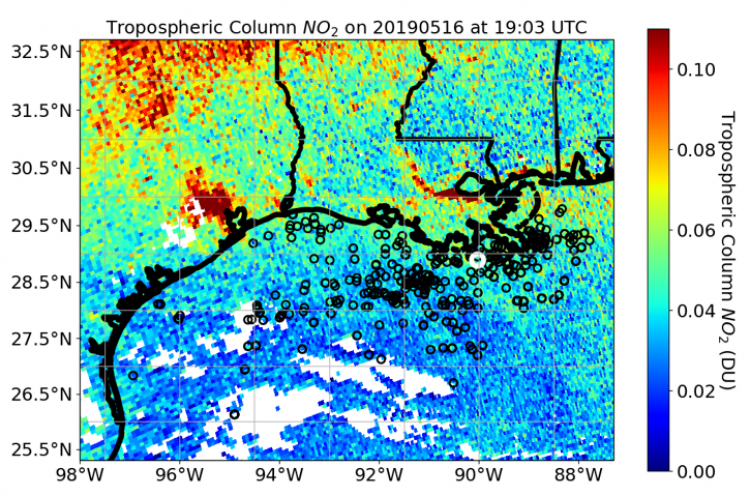BOEM is required to evaluate the air quality impacts from Outer Continental Shelf (OCS) oil and gas activities to the States as mandated by the Outer Continental Shelf Lands Act (OCSLA). Through the interagency OCSLA agreement, BOEM is working with the National Aeronautics and Space Administration’s (NASA) Atmospheric Chemistry and Dynamics Laboratory at Goddard Space Flight Center to explore the use of satellite data for these offshore air quality assessments.
The purpose of this Inter-agency Agreement is to conduct a review of existing satellite datasets that may be useful for supporting BOEM’s air quality regulatory mandate and evaluate their applicability for offshore monitoring in a field campaign. This scoping study will determine the feasibility of using satellite data in offshore environments in the Gulf of Mexico Region specifically for estimating and monitoring trends of the ground level concentrations of pollutants (both precursors and visibility pollutants) as defined by National Ambient Air Quality Standards (NAAQS) criteria.
Preliminary results indicate two air quality "regimes" in the Gulf of Mexico Region: (1) clean marine, where the wind direction is from the south, or ocean based and (2) polluted continental air, where the wind direction is from the north, or land based. The data successfully captured a flaring event from two oil and gas platforms using TROPOspheric Monitoring Instrument (TROPOMI) nitrogen dioxide (NO2) data, Visible Infrared Imaging Radiometer Suite (VIIRS), and a HYSPLIT back trajectory model (see image). A strong correlation between the Pandora NO2 ground data and TROPOMI NO2 satellite data shows that TROPOMI data are useful to BOEM for measuring the Gulf of Mexico offshore environment and coastal pollution. A final report and collection of monitoring data will be submitted by NASA in 2020.

TROPOMI Column NO2 Indicating Flaring near two oil and gas platforms from Copernicus Sentinel-5P (processed by European Space Agency), 2018, TROPOMI Level 2 Nitrogen Dioxide total column products. Version 01. European Space Agency. https://doi.org/10.5270/S5P-s4ljg54

